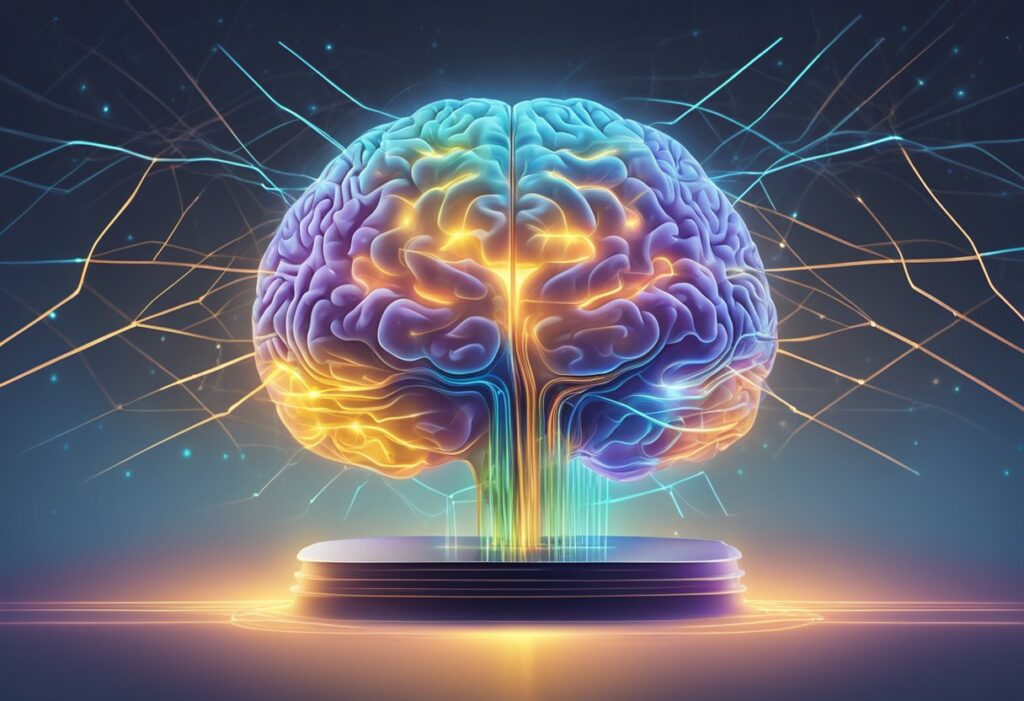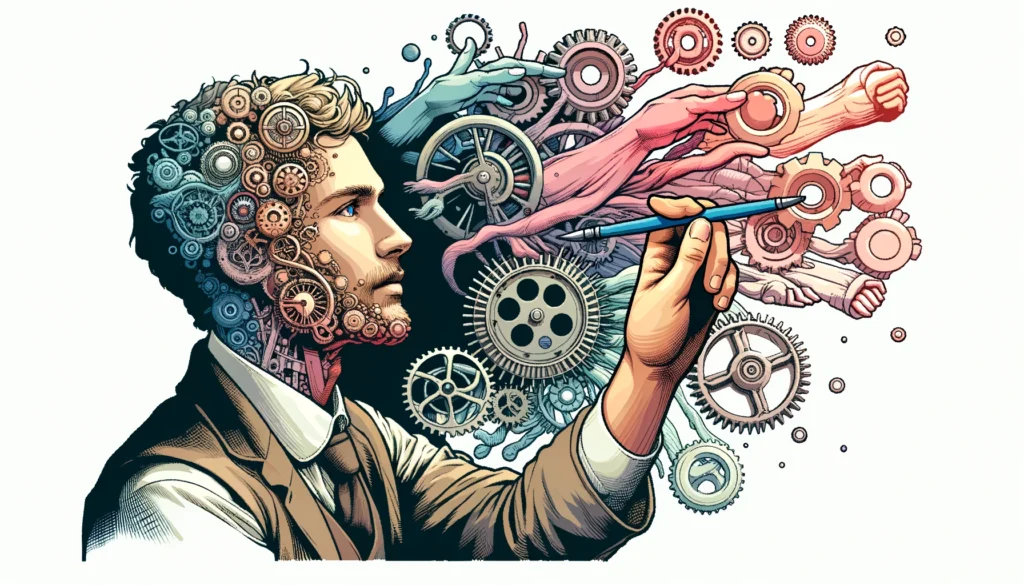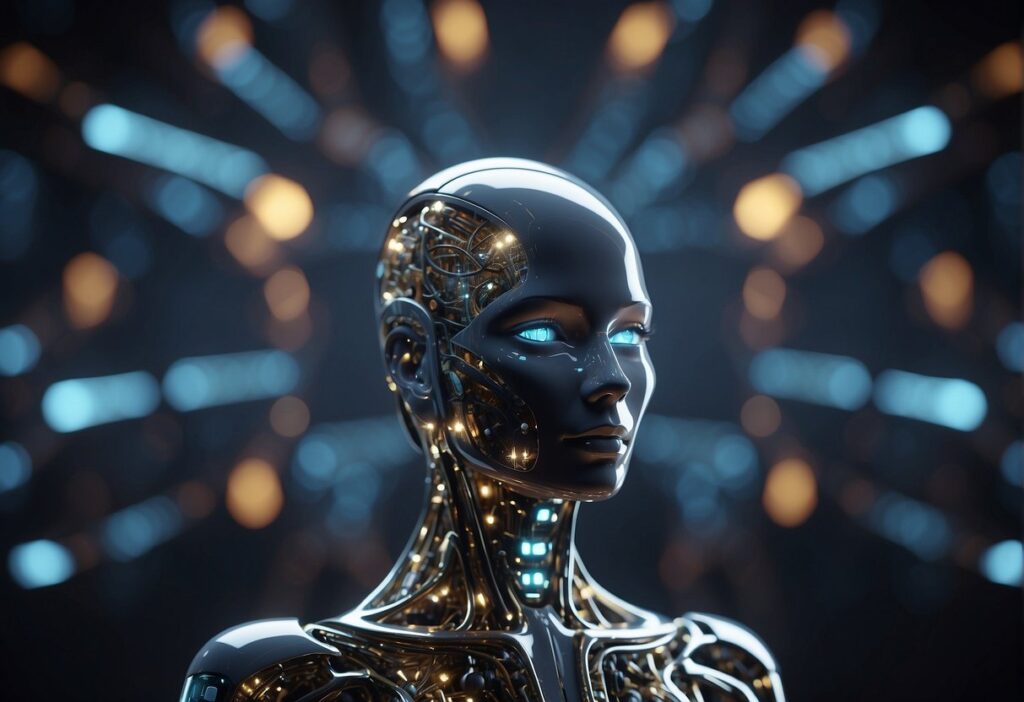
Google Brain has become synonymous with innovation in the field of artificial intelligence (AI). This division of Google has been at the forefront of developing cutting-edge technologies that are shaping the future of how we interact with machines. In this article, we’ll dive deep into some of the key breakthroughs and revolutionary projects led by Google Brain that are transforming industries and enhancing human capabilities.
The Birth of Google Brain
Google Brain was founded in 2011 as a deep learning research project within Google X, the company’s semi-secret research and development facility. The goal was simple yet ambitious: to harness the power of neural networks to solve real-world problems. Since its inception, Google Brain has grown into one of the most influential AI research groups in the world.
Advancements in Neural Networks
One of the most significant achievements of Google Brain is its work on deep neural networks. These networks have become the backbone of modern AI, enabling machines to learn from vast amounts of data. Google Brain’s research has led to substantial improvements in areas like image recognition, natural language processing, and speech synthesis.
The Development of TensorFlow
In 2015, Google Brain released TensorFlow, an open-source machine learning library that has since become a standard tool for AI researchers and developers. TensorFlow made it easier to build and deploy machine learning models, democratizing access to powerful AI tools. This platform has been used in countless applications, from self-driving cars to healthcare diagnostics.
Natural Language Processing with BERT
Another game-changing project from Google Brain is BERT (Bidirectional Encoder Representations from Transformers). Introduced in 2018, BERT revolutionized natural language processing (NLP) by allowing machines to understand context in a way that was previously impossible. BERT has been integrated into Google Search, enhancing the search engine’s ability to comprehend and respond to user queries more accurately.
Healthcare AI Innovations
Google Brain has also made significant strides in the healthcare industry. Their AI models are being used to predict patient outcomes, diagnose diseases, and even assist in drug discovery. One notable project is the development of AI systems that can detect diabetic retinopathy—a leading cause of blindness—by analyzing medical images with remarkable accuracy.
Enhancing Machine Translation with Neural Networks
One of the most impactful contributions from Google Brain is in the realm of machine translation. The team developed Google Neural Machine Translation (GNMT), a system that significantly improved the accuracy and fluency of translations across multiple languages. By leveraging deep learning techniques, GNMT has been able to produce more natural and contextually appropriate translations, making it easier for people worldwide to communicate across language barriers.
Quantum Computing and AI Integration
Google Brain is also exploring the intersection of quantum computing and AI. The potential of quantum computing to process information at unprecedented speeds could revolutionize AI, enabling more complex models and faster computations. Google Brain’s research in this area aims to develop new algorithms that can harness the power of quantum computers, potentially leading to breakthroughs in cryptography, optimization problems, and even material science.
Ethical AI and Responsible AI Development
Google Brain has also been a leader in the discussion around ethical AI. The team has published extensive research on fairness, accountability, and transparency in AI systems. They are committed to ensuring that AI technologies are developed responsibly, with a focus on mitigating bias, protecting privacy, and ensuring that AI serves the public good. This commitment is evident in their ongoing projects aimed at making AI more equitable and trustworthy.
Advancing AI in Robotics
Google Brain has also made significant strides in applying AI to robotics. Through projects like Robotics as a Service (RaaS), the team is exploring how AI can be used to control and improve the functionality of robots in various environments. These advancements are paving the way for robots that can perform complex tasks with greater precision, adaptability, and autonomy, which could revolutionize industries such as manufacturing, logistics, and even household services.
Reinforcement Learning and AlphaGo
One of the most publicized breakthroughs from Google Brain was the development of AlphaGo, a reinforcement learning model that defeated world champion Go players. This achievement not only showcased the power of reinforcement learning but also opened the door to applying these techniques in other complex domains like strategy games, logistics, and even financial modeling.
Google DeepMind: Uniting AI Powerhouses for Safer, Smarter Innovations
Google Brain, a key division within Google, has undergone significant changes recently, particularly with its integration into the newly formed Google DeepMind. This move is part of Google’s broader strategy to accelerate the development of more advanced and responsible AI systems. The combination of Google Brain and DeepMind, both renowned for their contributions to AI, is expected to enhance the pace of innovation and streamline the development of general AI technologies.
Google DeepMind, now led by Demis Hassabis, is focusing on creating AI systems that are not only more capable but also safer and more responsible. The team is continuing its work on some of the most advanced AI models, including the Gemini models, which are designed to handle complex tasks with greater efficiency. This unified approach is intended to bring together the best of both research groups, leveraging Google’s vast computational resources to push the boundaries of what AI can achieve.
Additionally, this structural change is part of a larger effort within Google to integrate AI more deeply across all its products, from Search to Google Cloud, while also emphasizing the importance of ethical AI development. By centralizing AI efforts under Google DeepMind, Google aims to ensure that its AI technologies continue to lead the industry while being developed and deployed in a manner that is responsible and aligned with societal needs (Google DeepMind) (blog.google) (blog.google).
Project Spotlights
AutoML
AutoML is another pioneering project from Google Brain. This suite of machine learning tools is designed to automate the process of training and deploying AI models. AutoML allows users with limited expertise in machine learning to create high-quality models tailored to their specific needs. This project has opened the door for more widespread adoption of AI across various industries.
Generative Models
Google Brain has also been a leader in developing generative models like GANs (Generative Adversarial Networks). These models have the ability to create new data samples from existing datasets, leading to advancements in fields such as image and video generation, music composition, and even game design.
AI for Social Good
One of the most inspiring initiatives by Google Brain is its AI for Social Good program. This project focuses on using AI to address some of the world’s most pressing challenges, including climate change, disaster response, and wildlife conservation. By partnering with organizations around the globe, Google Brain is applying its expertise to make a positive impact on society.
Pathways – A New AI Architecture
Google Brain introduced Pathways, a next-generation AI architecture designed to handle multiple tasks simultaneously and efficiently. Unlike traditional models, which are typically specialized for specific tasks, Pathways is built to be versatile and adaptable, processing millions of tasks at once. This innovation could lead to more general-purpose AI systems that are capable of learning and reasoning more like humans.
BigGAN – High-Fidelity Image Generation
Another notable project is BigGAN, a generative model capable of producing high-fidelity images that are almost indistinguishable from real photos. BigGAN leverages advances in GAN technology to create highly detailed and complex images. This project not only showcases the potential of generative models but also opens up new possibilities in creative fields like digital art, design, and virtual reality.
Federated Learning
In response to growing concerns over data privacy, Google Brain developed Federated Learning. This innovative approach to machine learning allows models to be trained across multiple devices without requiring users to share their data. By keeping data localized on devices and only sharing model updates, Federated Learning enhances privacy while still allowing for powerful AI applications, particularly in sensitive fields like healthcare and finance.
Google Brain’s Work in Creativity and AI
Google Brain has ventured into the world of creative AI with projects that blend art and technology. Their work on DeepDream and other creative AI tools has enabled new forms of digital art that push the boundaries of human creativity. These tools allow artists to explore new mediums, generating unique visuals, music, and even poetry, demonstrating the vast potential of AI as a collaborator in the creative process.
AI in Environmental Conservation
Google Brain has been leveraging AI to tackle environmental challenges. Through projects like Project Sunroof, which uses AI to map solar potential for homes across the globe, and AI-driven wildlife monitoring, Google Brain is contributing to the fight against climate change and biodiversity loss. These efforts underscore the potential of AI as a tool for environmental conservation and sustainable development.
Looking Ahead: The Next Frontier for Google Brain
As Google Brain continues to pioneer in AI, the team is increasingly focused on scalability, generalization, and interpretability of AI models. Future projects will likely delve deeper into multimodal AI—systems that can understand and generate content across different types of media, including text, images, and audio. Additionally, with growing emphasis on AI ethics, Google Brain will play a critical role in shaping policies and frameworks that guide the responsible development of AI technologies.
Conclusion
Google Brain’s journey from a research project to a global leader in AI innovation is a testament to the power of visionary thinking and technological expertise. The breakthroughs and projects highlighted here are just a glimpse of the impact Google Brain has had—and will continue to have—on the world. As they push the boundaries of what AI can achieve, Google Brain remains a beacon of innovation, driving progress in ways that benefit both industry and society.
Explore more about Google Brain’s innovative projects [here].





